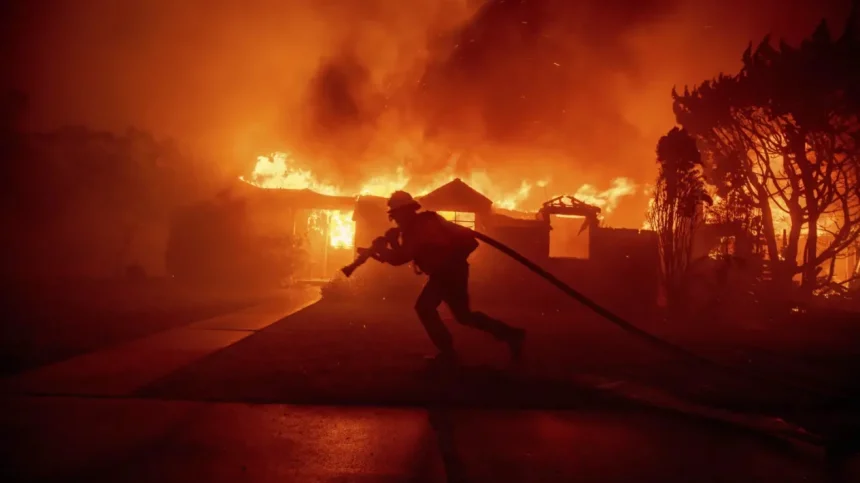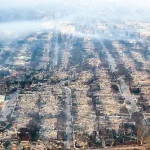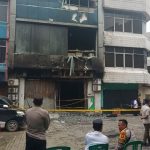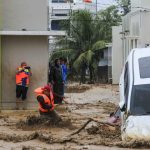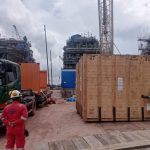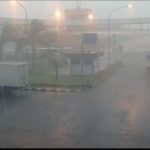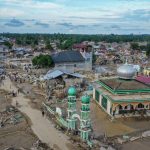Liga Asuransi – Dear readers, we hope your business and family are thriving and healthy. As always, this blog is dedicated to sharing risk management and insurance insights. In this article, we delve into the recent catastrophic fire in Los Angeles, USA, which destroyed tens of thousands of homes and buildings, displaced hundreds of thousands of people, and caused financial losses worth billions of dollars. This tragedy serves as a wake-up call for Indonesia to learn valuable lessons and take preventive actions now. If you find this article insightful, please share it with your friends and colleagues. Let us build awareness together for a more resilient future.
At the beginning of 2025, the world witnessed one of the most devastating wildfires in modern history in Los Angeles, USA. This inferno ravaged over 35,000 hectares of land, destroying thousands of homes, businesses, and public infrastructure, and caused financial losses estimated at $22 billion. More than 150,000 people were displaced, facing immense challenges during recovery. The Los Angeles Fire of 2025 underscored the escalating risks posed by climate change and exposed weaknesses in risk management systems, urban planning, and community preparedness.
For Indonesia, this disaster serves as a critical warning. As a disaster-prone nation—facing forest fires in Sumatra and Kalimantan, floods, and earthquakes—Indonesia confronts similar challenges in managing risks and mitigating impacts. High rates of deforestation, unplanned urbanization, and a lack of public awareness place the country at significant risk of experiencing similar tragedies in the future.
This article aims to explore key lessons from the Los Angeles Fire of 2025 and provide strategic recommendations for the Indonesian government, insurance industry, and society. Through collaboration, innovation, and proactive mitigation efforts, Indonesia can build stronger resilience and reduce the impacts of future disasters.
Lessons for Indonesia
The Los Angeles Fire of 2025 offers critical lessons for Indonesia, a country equally vulnerable to disasters such as forest fires, floods, and earthquakes. With a growing population and rapid urbanization, disaster risks will increase without proper mitigation measures. Below are the key takeaways Indonesia can adopt:
- Urban Planning and Infrastructure
Risk-Based Zoning
Risk-sensitive zoning is vital to mitigating disaster risks. Indonesia must avoid construction in fire-prone zones, such as forests with highly flammable vegetation or areas with a history of wildfires. Local governments should enforce strict regulations to ensure development occurs only in safe zones, minimizing the risk of wildfire-related losses.
Use of Fire-Resistant Materials
The use of fire-resistant construction materials, such as concrete, steel, and fireproof glass, should become a standard in fire-prone areas. The government can offer tax incentives to encourage developers to adopt these materials. Furthermore, technical guidelines for safe building distances can reduce the spread of fire between properties.
Green Open Spaces
Green open spaces serve as firebreak zones while enhancing environmental quality. These areas can be designed to prevent fire spread by planting non-flammable vegetation and creating green corridors that act as natural barriers. In urban areas, such spaces also help lower microclimate temperatures, reduce drought risks, and preserve ecosystems.
- Risk Management and Mitigation
Prevention through Reforestation and Vegetation Management
Reforestation and vegetation management are crucial steps to reducing wildfire risks. Planting fire-resistant trees in high-risk areas can prevent fires from spreading. Regular clearing of dry vegetation should also be prioritized to eliminate natural fuel sources that trigger wildfires.
Community Preparedness Programs
Educating communities about fire risks is essential to increasing awareness. Implementing fire drills and developing community-based evacuation systems are critical. Communities must be trained to create “defensible spaces” around their properties, develop family evacuation plans, and recognize early signs of fire.
Early Detection Technology
Advanced technology can help prevent large-scale disasters. Satellite monitoring systems can detect hotspots in forests, while drones can survey remote areas to identify fires early. Additionally, weather monitoring tools that detect dry conditions or high winds can issue early warnings for mitigation actions.
The Los Angeles Fire of 2025 demonstrates that meticulous planning, technological advancements, and public education are essential to mitigating disaster impacts. By adopting these lessons, Indonesia can strengthen its resilience to forest fires and other natural disasters, protecting its people and resources for the future.
Emergency Response System Preparedness
Strengthening Firefighting Capabilities
Firefighting teams must be equipped with modern tools, such as advanced fire trucks, firefighting helicopters, and automated extinguishing systems. Intensive training for firefighters should be a priority, particularly for managing large-scale forest fires. Procuring these resources requires adequate funding, supported by central and local governments to ensure effectiveness.
Establishing Community-Based Emergency Response Units
Local communities can serve as the first line of defense in preventing fires. The formation of Community Emergency Response Teams (CERTs) can expedite initial responses to fires. These teams can be trained to use basic firefighting tools and coordinate with professional firefighters during emergencies.
Integrating Technology for Early Warning Systems
Technology-based early warning systems, such as location-based apps, can notify residents in affected areas. These platforms can provide evacuation routes, safe zones, and real-time updates on fire conditions. By leveraging such technology, evacuation processes can become safer and more efficient.
Lessons from the Los Angeles Fire of 2025 demonstrate that strategic planning, technology adoption, and public education are key to mitigating disaster impacts. With proactive measures, Indonesia can enhance its resilience to forest fires and other disasters.
The Role of Government in Reducing Disaster Risks
As a disaster-prone nation, Indonesia requires strategic governmental measures to significantly reduce disaster risks. Lessons from the Los Angeles Fire of 2025 highlight the critical role of governments in creating effective policies, investing in climate resilience, and raising public awareness. Below are three main approaches the Indonesian government can take:
- Regulations and Policies
Implementing Sustainable Development Policies
Development that ignores environmental factors increases disaster risks, including forest fires. The government should promote sustainable development policies that factor in environmental risks. All development projects should undergo strict environmental impact assessments to ensure they do not increase the potential for fires due to human activity or unplanned urbanization.
Enforcing Strict Zoning Regulations and Fire-Resistant Materials
Risk-based zoning must be a top priority, especially in wildfire-prone areas. Local governments must ensure construction does not occur in hazardous zones. Additionally, regulations mandating the use of fire-resistant materials, such as concrete, steel, or heat-resistant glass, should be enforced for buildings in high-risk areas. Monitoring and enforcement of these regulations must also be strengthened to ensure compliance.
Tax Incentives for Properties Adopting Fire Mitigation Measures
To encourage public and private sector awareness, the government can offer tax incentives for properties that adopt fire mitigation measures. Examples include incentives for using fire-resistant materials, installing automated extinguishing systems, or creating green open spaces around properties. These measures not only reduce losses during fires but also foster a culture of risk mitigation in society.
- Investment in Climate Resilience
Supporting Renewable Energy to Mitigate Climate Change
Climate change is a major factor in worsening the frequency and intensity of wildfires. To combat this, the government must invest in developing renewable energy sources, such as solar, wind, and hydropower. This initiative can help reduce carbon emissions, the main driver of global warming, while fostering more sustainable energy resilience.
Reforestation and Forest Protection as Fire Risk Controllers
Reforestation is a crucial step in reducing wildfire risks. The government should implement a national reforestation program that plants fire-resistant trees in high-risk areas. Additionally, natural forest protection must be tightened to prevent illegal deforestation, a common trigger for wildfires. Consistent enforcement of environmental laws is vital to protect Indonesia’s forests as a natural disaster mitigation tool.
- Education and Public Awareness
National Campaigns on Fire Hazards and Mitigation Measures
Public awareness is a key element in preventing wildfires. The government can launch national educational campaigns to provide information about fire hazards, mitigation steps, and the importance of disaster preparedness. These campaigns can be conducted through mass media, schools, and community training programs.
Community Training Programs for Fire Preparedness
Local communities often serve as the first line of defense during disasters. The government should provide community-based training programs to equip residents with basic skills for fire preparedness. Training can include using basic firefighting tools, creating family evacuation plans, and maintaining safe open spaces around homes. By involving communities directly, the government can build stronger collective resilience.
The Role of the Insurance Industry in Facing Disasters
The insurance industry plays a vital role in helping communities and economies recover from major disasters such as wildfires. Beyond providing financial protection, the industry has a responsibility to promote risk mitigation efforts and public education. Here are the key steps the insurance industry can take:
- Relevant Insurance Products
Developing Specialized Wildfire Insurance Policies
To address the growing risks of wildfires, the insurance industry must develop specialized products tailored to wildfire-prone areas. These policies can include coverage for property damage, evacuation costs, and debris removal. By offering specifically designed coverage, insurance can provide more comprehensive protection for homeowners, businesses, and public properties.
Incorporating Risk Mitigation Coverage in Policies
Preventive measures can also be incorporated into insurance policies. Examples include premium discounts for properties using fire-resistant materials or adopting mitigation designs such as open spaces around buildings. By providing these incentives, insurers can encourage policyholders to invest in mitigation measures that reduce wildfire risks.
- Reinsurance and Risk Sharing
The Importance of Reinsurance in Distributing Risks
Reinsurance is a key element in ensuring the stability of the insurance industry when facing large claims due to disasters like wildfires. By transferring part of their risks to global reinsurers, insurance companies can reduce their financial burdens and ensure claims are paid promptly. In large-scale events, such as the Los Angeles Fire of 2025, reinsurance helps stabilize the insurance market, allowing companies to continue operating without being overwhelmed financially.
Innovative Solutions: Parametric Insurance
Parametric insurance is an innovation that can expedite claims processing in disaster scenarios. Unlike traditional insurance that requires damage assessment, parametric insurance is based on predefined parameters, such as the size or intensity of a wildfire. When these parameters are met, claims are processed immediately without additional assessments. This solution significantly accelerates recovery for affected communities and businesses.
These measures highlight the insurance industry’s critical role in mitigating risks, supporting recovery, and fostering resilience in disaster-prone regions. By innovating products and strengthening collaboration with governments and communities, the industry can better respond to the growing challenges posed by climate-related disasters.
Enhancing Insurance Education
Raising Public Awareness of the Importance of Fire Insurance
Many people remain unaware of the critical need for fire insurance, particularly in disaster-prone areas. The insurance industry must actively promote public education campaigns to address this gap. These campaigns should disseminate information about the importance of insurance coverage, the types of policies available, and the risks they can mitigate, ensuring broad outreach to the community.
Providing Policyholder Guidance
Education must also include practical guidance for policyholders to understand their policies better. Many policyholders are unaware of coverage gaps, such as claim limits or specific exclusions in their policies. By offering clear, comprehensive guidance, insurance companies can help clients ensure their coverage aligns with their needs and the risks they face.
The Role of Communities in Reducing Disaster Risk
- Proactive Actions at the Individual Level
Using Fire-Resistant Materials for Homes
Individuals can start by building homes that are more resistant to fire risks. Using fire-resistant materials such as concrete, steel, and non-wood roofing can significantly reduce the risk of fire damage. Additionally, installing heat-resistant doors and windows can provide added protection against spreading fires.
Creating Open Spaces Around Properties
Clearing dry vegetation and establishing defensible spaces around homes can effectively prevent fire spread. These open areas act as firebreaks, giving firefighters more time to protect properties.
Preparing Evacuation Plans and Emergency Kits
Every family should have a clear evacuation plan, including exit routes, meeting points, and rescue procedures. Emergency kits containing essentials such as food, water, medications, flashlights, and important documents should always be ready for use during disasters.
- Community Collaboration
Forming Community-Based Fire Response Teams
Local communities can form fire response groups to improve early disaster response. These teams can collaborate with local firefighting units and act as the first line of defense before professional help arrives. Training in basic firefighting techniques and coordination during evacuations can be the primary focus of these groups.
Participating in Fire Training and Drills
Communities should actively engage in training and fire simulation programs organized by the government or relevant organizations. These programs provide crucial knowledge about what steps to take before, during, and after a fire. The more people are trained, the greater the chance of minimizing disaster impacts.
- Awareness and Support for Policies
Supporting Government Policies on Fire Risk Reduction
Communities should support government policies aimed at reducing fire risks, such as zoning regulations, fire-resistant material usage, and vegetation management. Support can include compliance with regulations and advocacy to expedite the implementation of effective policies.
Encouraging Participation in Environmental Awareness Campaigns
Communities can also contribute by actively participating in environmental awareness campaigns. Initiatives such as reforestation programs, clearing dry land, and waste management help prevent fires. Spreading information to neighbors and the wider community fosters collective awareness about the importance of disaster risk mitigation.
The Critical Role of Insurance Brokers
Insurance brokers play a crucial role in helping individuals, businesses, and organizations manage risks effectively. Acting as intermediaries between clients and insurance companies, brokers are responsible for providing insurance solutions tailored to the specific needs of their clients. They analyze the risks clients face, identify the necessary coverage, and ensure that insurance policies offer optimal protection.
During disasters such as major fires, insurance brokers serve as reliable partners. They assist clients in understanding their policies, submitting claims accurately, and ensuring a smooth claims process. Brokers also advocate for clients’ interests during claim disputes, ensuring fair and timely compensation.
Additionally, brokers function as proactive advisors in risk management. They recommend mitigation measures, such as using fire-resistant materials, improving safety protocols, or developing emergency response plans. With access to a wide range of products and insurers, brokers can negotiate competitive premiums and broader coverage for their clients.
With their technical expertise and client-focused approach, insurance brokers are strategic partners in protecting assets, reducing losses, and ensuring the sustainability of businesses or personal lives.
Conclusion
The Los Angeles Fire of 2025 serves as a stark reminder of the devastating financial, social, and environmental impacts of wildfires. With damages totaling $22 billion, this disaster underscores the need for better preparedness and risk management. Key lessons from this tragedy include the necessity for strict urban planning regulations, investment in climate resilience, and the vital role of insurance and reinsurance in supporting post-disaster recovery.
Collaboration among governments, the insurance industry, and communities is critical to addressing similar threats in the future. Governments must lead with policies that support sustainable development, environmental protection, and robust disaster response infrastructure. The insurance industry can contribute by offering innovative products, enhancing education, and promoting risk mitigation measures. Meanwhile, communities must take proactive steps to raise awareness, implement individual mitigation strategies, and support policies aimed at reducing disaster risks.
Wildfires are becoming more frequent due to climate change and uncontrolled urbanization. Therefore, all stakeholders must act now to reduce risks, protect assets, and build a more resilient future. Through collective efforts, we can create communities better prepared for future challenges and minimize the impact of disasters.
For all your insurance needs, Contact L&G Insurance Brokers Today!
—
Don’t waste your time and secure your finances and business with the right insurance.
HOTLINE L&G 24 JAM: 0811-8507-773 (CALL – WHATSAPP – SMS)
website: lngrisk.co.id
Email: customer.support@lngrisk.co.id
—


